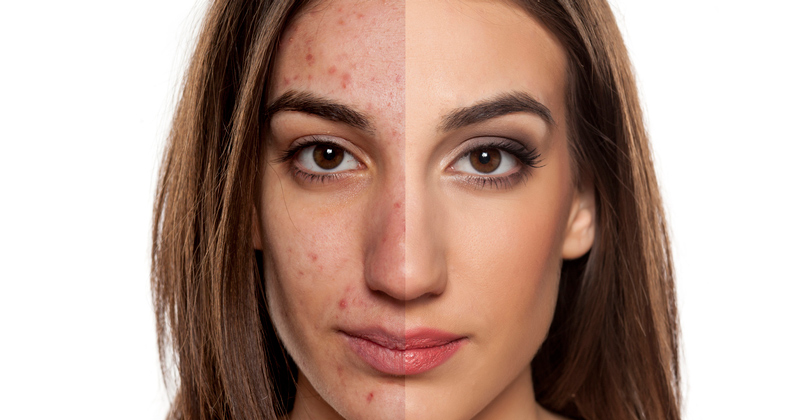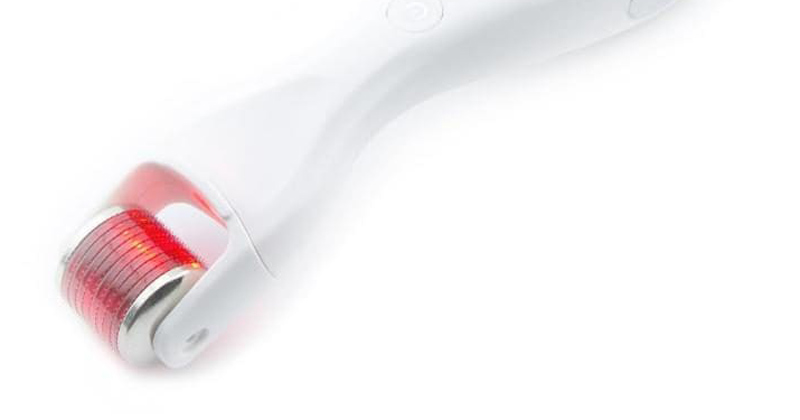Microneedling - also known as Collagen Induction Treatment or C.I.T - has been gaining a reputation for its ability to rejuvenate the skin. Celebrities such as Naomi Watts and Jennifer Aniston swear by it.
So how does microneedling work?
As our skin ages, the repair and rejuvenation mechanisms begin to decline naturally - this starts from the age of 28 years. The effect of this is the collagen density decreases in our skin.
Micro-needling is a skin rejuvenation treatment that naturally helps trigger collagen and elastin synthesis within the skin with maximum results and minimum down-time. It’s safe for nearly all skin types. An initial consultation with a consultant dermatologist can confirm this.
The technique works by creating microscopic channels in the skin while still keeping the epidermis intact.
This process actively produces growth factors which induce collagen producing cells known as fibroblasts to produce fresh new collagen and elastin which are essential in keeping the dermis elastic and resilient thus firmer and wrinkle free and glowing.
Microneedling is very effective when combined with Platelet Rich Plasma (PRP)
Platlet Rich Plasma Therapy - also known as the ' Vampire Lift' - gives excellent results.
PRP contains growth factors that additionally stimulate cellular regeneration and collagen production.
This is done by drawing a sample of your blood and centrifuging it (spinning it) to separate the red blood cells - erythrocytes from the plasma which contain platelets which release a cascade of growth factors which in turn induce collagen production for firmer, glowing, wrinkle free skin

What does microneedling most effectively treat?
Microneedling can:
- Improve wrinkles, minimize pore size and induce skin tightening.
- Stimulate collagen production which promotes rejuvenation
- Improve surgical, traumatic, burn and acne scars
- Hyperpigmentation (brown spots and melasma)
- It may also improve stretch marks
Microneedling - what to avoid after a treatment
- Avoid retinoids and treatments for auto-immune disease for 24 hours before treatment
- Avoid sun exposure to the treated area for 24 hours before treatment
- Avoid this procedure if treatment has occurred with Accutane/Isotretinoin within the last 6 months
Does microneedling hurt?
A topical anaesthetic cream is used before the treatment, so discomfort, if any, is minimal. The most sensitive areas tend to be the forehead and upper lip.
Redness and swelling or bruising after treatment/ post treatment only last
After 24-48 hrs until the skin returns to normal
Sunscreen and sun avoidance is strongly recommended after treatment
Best visible results are seen with a series of at least 4 to 12 treatments, spaced 3 to 6 weeks apart
There is a continuous and progressive improvement overtime in overall skin smoothness and firmness and elasticity. The complexion becomes more even and brighter over time and if combined with specific medical grade creams and active ingredients prescribed by the medical practitioner.
When do patients see results?
Final results won’t be noticeable from three to twelve months as boosting collagen and elastin within the dermis take time. Remodelling the skin and complete rejuvenation takes 3-12 months. Results are dependent on the individual.

Can I do microneedling at home?
The at-home devices for microneedling should be used mainly as maintenance after medical micro-needling as they are not as effective being only 0.5 mm penetration depth as opposed to medical micro-needling devices, which have a depth of up to 2.5 mm.
They are non-sterile and as they are performed in a non-clinical setting where there may be a higher probability of acquiring an unwanted infection.
The depth of penetration of dermal rollers depends on the level of the individual’s pain tolerance doing the treatment. In a clinical setting a potent prescribed anaesthetic cream is applied for 40 mins before treatment.
Medical microneedling devices have 12 or more 32 gauge needles in the hand-piece that are replaced with each treatment. The home devices needling devices can become less sharp overtime.
Lastly, the medical microneedling can for more than just basic skin rejuvenation.
It can also be used on acne scarring, stretch marks, lax skin on the hands and neck and on the scalp for hair restoration and treatment of hair loss related diseases.
An advantage of microneedling is to create microscopic holes in the skin to allow topical products to penetrate deeper, the type of skin products used in a clinical setting are of medical grade and specially formulated for optimal penetration for best results.
Microneedling is a safe and affordable way to rejuvenate aging skin and should be done in a medical environment by a trained medical professional.
The at home dermal-rollers might be a way to help maintain the results after a microneedling treatment but it cannot compete with micro-needling done in a controlled medical setting by a dermatologist of plastic surgeon.
Who is microneedling not suitable for?
It can be used on all skin colours and skin types however it should be avoided if one has an active infection on the skin such as herpes simplex, herpes zoster, molluscum contagiosum, impetigo, active inflamed acne or rosacea, pustular rosacea, broken skin, broken capillaries , hypersensitive skin, acute eczema, sunburnt skin, infected wounds / broken skin.





